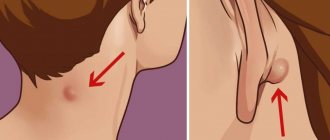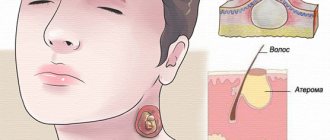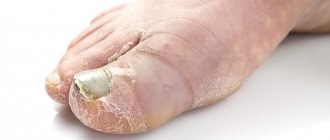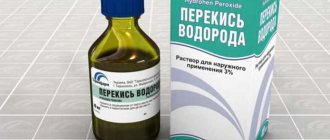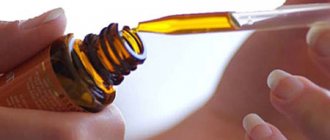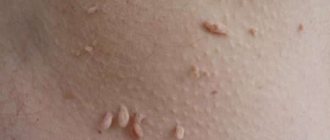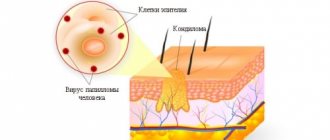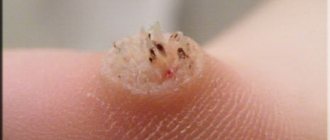There are a huge number of skin diseases that arise due to poor lifestyle, inflammatory processes or exposure to infection. Among them is a common pathology called atheroma. Treatment at home for this disease requires a lot of effort, but is highly effective and sometimes surpasses the means of official medicine.
General information about atheroma
Atheroma is a specific cavity in the skin that is formed as a result of the accumulation of a pasty secretion in the duct. Its development is facilitated by blockage of the external opening of the sebaceous gland, which prevents the free release of secretions. The substance is characterized by a pronounced unpleasant odor and has a spherical shape. The size of the formation is comparable to the size of a chicken egg. The appearance of atheroma occurs in different parts of the body where the skin comes into contact with clothing. Wen are often noticed in the following places:

- Back.
- Skin on the face.
- Armpits.
- Head.
- Ear area.
- Mammary gland.
- Chin.
Removing atheroma at home is possible only after consultation with a specialist and studying the clinical picture. The patient also needs to determine the predisposing factor that caused the occurrence of the pathology. Often it is a failure in the patency of the ducts or the appearance of a follicle. In turn, such formations appear due to injury or when testosterone levels in the blood increase, which helps block the hole. As a result, sebaceous secretions actively accumulate, and the follicle begins to grow in size and turns into atheroma.
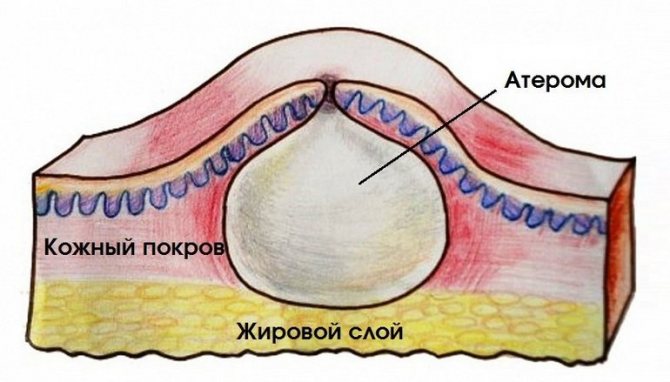
In addition, the cause of the unpleasant phenomenon can be damage or rupture of the sebaceous glands, which leads to the penetration of the follicle under the skin layer, while the secretion continues to be produced by the body. In the chronic form of atheroma, it becomes purulent and is accompanied by the formation of acne. Other causes of the disease include the following:
- Genetic predisposition to skin diseases.
- Hormonal changes during puberty, pregnancy or breastfeeding.
- Impact of bad environment.
- Fast pace of life and lack of adequate rest.
- Physical work.
- Failures in metabolic processes.
What you need to know about treating atheroma at home
Atheroma should be treated at home immediately after it is detected. Then you can achieve excellent results. You should not heat or wet the cyst, especially if it has opened. There is no need to pick and squeeze pus out of it, otherwise you will introduce an infection into it.
If suppuration appears on the body, you should immediately consult a doctor. But before that you need to give yourself first aid. First, a gauze bandage is applied to the affected area. If your general condition gets worse, you need to call an ambulance.
Opening the source of suppuration using home methods is strictly prohibited. The doctor will prescribe you special products to improve your skin condition. As a rule, Ichthyol ointment or Levomekol are prescribed. Both remedies give a good effect.
If atheroma occurs on the head and face, it is better to remove it before it grows. Otherwise, unsightly scars may remain. Anti-inflammatory home treatment of atheroma with folk remedies is allowed. When the inflammation subsides, you need to go to a dermatologist. He will peel out the walls of the cyst. When there is pus, it is not worth removing the atheroma, otherwise there is a high risk of relapse or spread of infection.
Treatment for wen
Traditional methods of treating atheroma are characterized by good effectiveness, as well as the absence of significant contraindications. But you can start the fight against wen after a thorough examination in the clinic and consultation with a doctor.
Illiterate self-medication can lead to dangerous complications and only worsen the skin condition. At the same time, treating pathology at home is allowed only at an early stage of its development. In its advanced form, atheroma requires surgical intervention.
However, as a good therapy for a chronic disease, you can use a lot of folk remedies, including ointments and tinctures. As for treatment with pharmaceutical drugs, it is as follows:

- To remove purulent masses, it is necessary to use an ointment with an antibiotic, which has an anti-inflammatory effect. Levosin, Levomekol or Oflocain are used as it. They are prescribed by the attending physician after a comprehensive examination of the patient. With regular use of ointments, pain can be localized and infection can be prevented.
- Dermatoprotectors are intended to strengthen skin tissue, accelerate cell turnover and restore the epithelial layer. The list of such products includes Adolen gel, Effezel gel and Differin. The listed ointments eliminate the risk of replacing atheroma with connective tissue with its subsequent growth.
- Absorbable ointments. Designed to eliminate scars after surgery and improve blood circulation. These include Lyoton, Heparin ointment and Contractubex.
Festering atheroma
If the atheroma opens on its own, the first thing to do is to calm down and not panic. Then, using a cotton swab or sterile bandage, carefully and thoroughly remove the released curd-purulent liquid. Afterwards, simply cover the wound with a plaster or apply a bandage.
Atheroma will not completely go away without surgery, no matter which of the two methods described below you try to remove it:
1 Extrusion. Often, atheroma is mistaken for a banal pimple, perhaps a large one, and as a result they try to squeeze it out. However, this method will not lead to anything good, except that it will begin the inflammatory process.
2 Pumping out the contents of the subcutaneous formation with a syringe. This method, like the previous one, will not get rid of atheroma, since the capsule remains in place. You run the risk of infection and inflammation of the cyst.
If the atheroma is inflammatory in nature, it should not be removed; it is enough to simply open it, which will allow the purulent fluid to come out, then wash the wound with a disinfectant and apply drainage. It is strictly forbidden to squeeze out the atheroma; this can lead to the cyst bursting and the contents of its sac getting under the dermis, which will lead to an abscess. If this has already happened, you should immediately go to the doctor.
IMPORTANT
! If purulent formations break through the skin, then the person’s blood will most likely become infected, and this can lead to death.
In the fight against a subcutaneous tumor, it is highly not recommended to resort to folk methods, especially “conspiracies”. It's basically a waste of time and effort. At the same time, knowing how to properly get rid of atheroma suppuration at home, it is better to seek medical help in a timely manner to avoid surgery.
Home treatment with herbal remedies is allowed only if the atheroma is very small, has not yet become inflamed and does not have a purulent formation, namely, when there is time to experiment and there is no need to urgently contact a specialist.
Ointments for home use
After consulting with a specialist, you can begin to figure out how to get rid of atheroma at home. Today there is a huge variety of highly effective ointments that have a therapeutic and anti-inflammatory effect, which are allowed to be used independently. If there is no need for surgical intervention, you can find other ways to eliminate atheroma. Treatment at home with ichthyol ointment is one of them.
The product is characterized by excellent elimination of a number of symptoms - skin redness, irritation and discomfort. When carrying out treatment with ichthyol ointment, you must follow these rules:
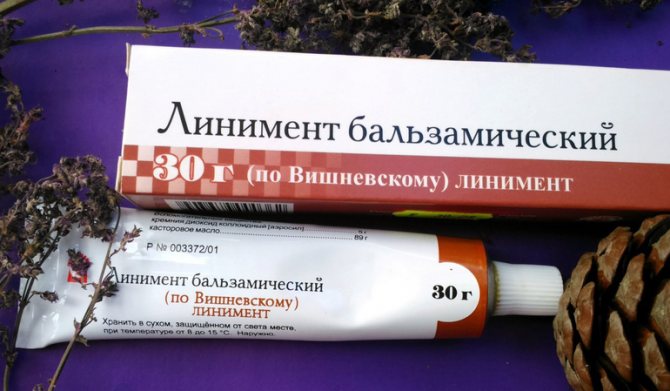
- The drug is applied in the form of a compress, for which it is necessary to use gauze bandages, soaking them in the drug.
- Compresses are changed 3 times a day, and to prevent them from slipping, adhesive tape should be used.
- Treatment is carried out until the symptoms of the disease are completely eliminated and the affected skin is restored.
An equally effective preparation for home use is Vishnevsky ointment. It has a wide range of applications and provides a quick fight against the main signs of atheroma. Before using the ointment, you need to consult a specialist and conduct a small test to determine if you have an allergic reaction. To do this, apply a small amount of the product to the affected area of the skin. If there are no negative reactions, the ointment is approved for use.
Bandages soaked in Vishnevsky ointment are applied for a week and changed twice a day. Key contraindications include individual intolerance and the appearance of an inflammatory reaction.
How is drug therapy for cysts performed?
Treatment of atheroma without surgery involves applying warming ointments or compresses. Topical medications should widen the duct of the gland and remove the blockage so that the exudate can flow out through the natural channel.
You can try to cure atheroma without surgery using the following means:
- Liniment according to Vishnevsky. This medication can relieve swelling and inflammation from the layers of the dermis and subcutaneous tissue. Squeeze the ointment onto a napkin and apply to the affected area. Place a bag or oilcloth on top of the gauze. Repeat the procedure 1-2 times a day and throughout the night. Small atheroma resolves in 5-7 days.
- It is possible to treat atheroma with Ichthyol ointment. It contains resins from ancient fish, which are found in rocks. The unique property of ichthyol to pull accumulated fat from the cyst and cleanse the capsule has found its application in medicine. Therapeutic compresses with this ointment are applied daily for a week. If the dynamics are positive, treatment is continued for up to a month.
- To treat atheroma, Dimexide solution is used as a compress. This medication warms up the stagnant fat inside the capsule, softening it. Dimexide is able to break through the canal and draw out the contents of the cyst. You cannot use a concentrated medicine for a compress. It is necessary to mix the drug and warm purified water in half. Compresses are applied for 3-4 hours. To warm up, be sure to use cotton wool or a warm scarf over the oilcloth.
- Burning with iodine gives positive dynamics in some patients. Iodine is applied daily to the skin in the projection of atheroma; an iodine mesh can be made. The success of the method can be noticed only after 2-3 weeks. If persistent redness and burning occurs, the procedure must be stopped.
Local use of drugs with a warming effect is justified in the initial stages of atheroma, when the size of the cyst is up to 3 cm.
To improve immune responses, patients are prescribed multivitamins. Doctors have long noticed that the stronger the immune system, the faster skin diseases go away.
In case of suppuration and inflammation of the seal, treatment is carried out with antibacterial drugs. A thin layer of Levomekol or Triderm is applied to the reddened skin over the infected cyst. The course of treatment with antibiotic ointment takes 7-10 days.
Actions in case of complications
One of the most dangerous formations is atheroma on the head. Treatment with folk remedies for such a disease is impossible, since failure to follow the rules can lead to worsening of symptoms. When faced with the development of complications, you must immediately contact the clinic for help. The operation will be performed under local anesthesia, and the specialist will remove the contents of the cyst and the capsule itself. The duration of the procedure is about 40 minutes. Care after surgery should be based on the following rules:
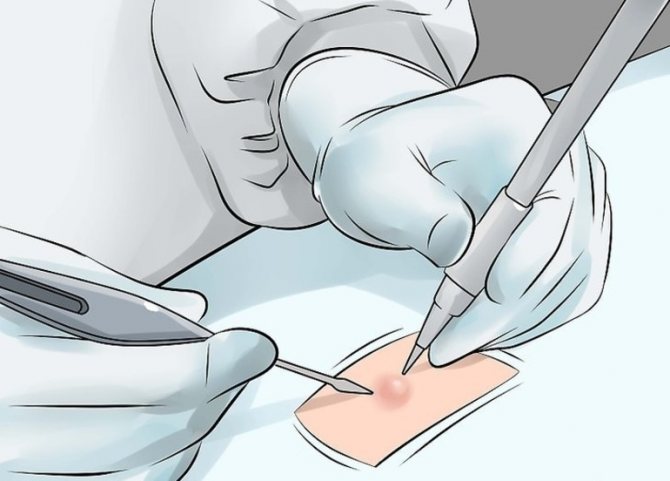
- If suppuration or inflammation of the cyst appears, it is forbidden to smear the affected area with any existing means, as this can lead to the development of an abscess. Accelerated breakthrough of purulent formations causes infection of the body.
- After the operation, you need to properly care for the formed scar. This is done using external agents with a resolving effect.
- After opening the abscess, it is necessary to carry out procedures with the application of compresses based on antiseptic and restorative agents. Once the symptoms subside, which happens after about a month, the atheroma can be removed to prevent recurrence.
Aloe vera
The plant is one of the most effective remedies in the fight against skin inflammation. It reduces the growth rate of atheroma on the face and has a drying effect.
Apply the sheets with the cut side to the cyst and fix.
Use aloe leaves after washing them and cutting them into equal lengthwise pieces. Remove thorns. Apply the sheets with the cut side to the cyst and fix. Do not apply a pressure bandage. A regular patch is best. The compress is left on the skin for a day, then changed. You can also use aloe juice by dripping it onto the problem area.
The best folk remedies
The procedure for removing atheroma at home is permissible only in the early stages of the disease. If symptoms worsen, such action is contraindicated. But if the disease has appeared recently, and there are no pronounced painful sensations when touching the abscess, you can begin treatment with folk remedies without the use of medications.
This form of therapy involves cleaning the cyst capsule from purulent contents. For this purpose, plant-based products are used in the form of masks, ointments and tinctures.
When using an unconventional approach, it is important to consult a doctor first to avoid serious consequences.
Among the best recipes from traditional medicine are the following options:
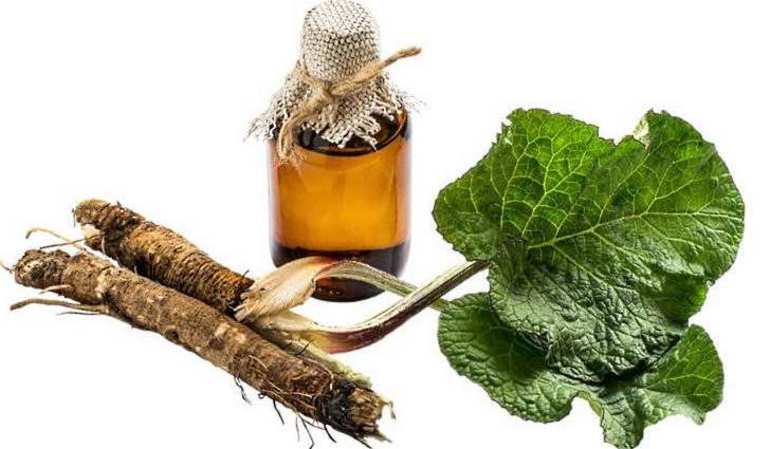
- Treat the affected area with aloe juice. To do this, you need to dry 2 large leaves of the plant and grind them to a pulp, and then pass them through cheesecloth. You need to treat the skin up to six times a day, and for the next daily course you need to use fresh juice.
- Processing with lamb fat. To carry out the procedure, you need to melt and cool animal fat, and then place it in a cream package and begin to rub it into the affected area. To improve the effectiveness of such a folk remedy, you can add vegetable oils or garlic juice to the composition.
- Treatment with tincture of burdock roots. Using a meat grinder, carefully grind the fresh root and mix it with butter or pork fat. Then the solution is infused for three days in the dark. The skin should be smeared until all symptoms of the disease completely disappear.
- Treatment with a decoction of coltsfoot leaves. The product is prepared on the basis of three leaves of the plant placed in a 100 ml container.
How to get rid of atheroma at home
You can try simple home treatments. For this, aloe juice, sour cream and honey, lamb fat, chicken egg, silver, herbs, onions, garlic and various lotions are used.
To obtain a good effect, it is necessary to perform treatment according to established rules.
Herbal folk remedies
Treatment of atheroma at home will alleviate the general condition quite quickly. Various herbal remedies will help solve the problem:
- Burdock root. To prepare a homemade medicinal ointment, take pork fat, burdock root, and butter. The roots are crushed using a meat grinder. Then melted pork fat and butter are added to the mixture. The ingredients are mixed. The composition is kept for 3 days. Then it is applied through gauze to the atheroma for a day.
- Wormwood lotions. Take a few tablespoons of dry plant. It is crushed and then poured with half a liter of boiling water. Next, you should mix the composition, and you can use it as a lotion.
- Coltsfoot leaves. Fresh leaves of the plant are taken. They are applied to the atheroma, fixed with adhesive tape. The leaves must be changed daily.
- Peony. A decoction made from peony roots will help cure atheroma anywhere. Take 2 tbsp. l. preparations are crushed in a blender. Then half a liter of water is added to the gruel. The mixture is stirred and sent to the fire. Boil for 5 minutes. Next, the broth is cooled. Can be used as a lotion.
- Ginseng root. Traditional medicine is well known for the healing properties of ginseng root, which is why it is also used for home removal of atheromas. The plant is crushed, mixed with water and boiled. Then the broth is cooled and applied to the affected areas on the legs, behind the ear, neck and face.
- Plantain and dandelion. A compress made from fresh plants will give a good effect. You need to take 10 dandelions (flowers and stems) and a couple of plantain leaves. Fresh cabbage is added to them. Everything is crushed in a blender. Then the paste is applied to the atheroma and kept for 2 hours. The mixture will draw pus and fat out, and the cyst will decrease in size. The compress must be applied regularly.
- Wheat germ juice. The drink should be taken daily, diluting it with water. This home remedy improves metabolism and normalizes the activity of the sebaceous glands.
- Primrose. To get rid of cysts, you can prepare a decoction of primrose for bathing. 1 tbsp. l. dried grass is poured into a glass of clean water. Then the mixture is heated over medium heat. After it boils, you need to turn off the stove. Then the broth is cooled and filtered through cheesecloth. It is recommended to add it to the bath while bathing.
- Field horsetail. Horsetail is considered a good home remedy to combat the disease. It is crushed and then poured with half a glass of vodka. Next, the mixture is sent to a dark container. The decoction should be kept in the refrigerator for 3 weeks. Then it is filtered and applied to the neoplasm.
- The benefits of aloe are known to everyone. The juice of the plant will also help get rid of atheroma. Take 1 tsp. honey and 1 tsp. chopped plant. If desired, you can add grated chestnut to the mixture. Apply the composition to the cyst until it resolves.
- Fragrant callisia (golden mustache). Take 5 leaves of the plant and wash thoroughly in cold water. Then the leaves need to be crushed, applied to cotton wool and applied to the atheroma.
Treatment of atheroma with homemade herbal remedies will help the patient get rid of pain and quickly relieve inflammation. However, it is impossible to completely remove the tumor with their help.
Use of animal ingredients
There are other ways to treat atheroma at home. 3-5 times a day, lubricate it with melted lamb fat, rubbing it in very thoroughly.

It is impossible to completely cure atheroma on your own at home. It is necessary to remove the tumor surgically. Conservative treatment is a temporary measure.
For the face, it is recommended to use egg wash. It is carefully separated from the raw egg from the inside of the shell. The compress should be kept on the affected area until completely dry.
Simple medicines that can be made from products available at home
In search of an answer to how to remove atheroma, it is worth considering other homemade recipes for getting rid of atheroma. They include ingredients that can be found in any refrigerator:
- Honey. The antibacterial agent gives a good effect. They need to smear the atheroma so that it decreases in size. You can add cinnamon to honey.
- Baked onions. The product is crushed and mixed with laundry soap, previously grated. The paste is applied to the affected area a couple of times a day.
- Linseed oil. It is recommended to take 1 tbsp on an empty stomach. l. flax oil This will improve the measurement of fat in the body.
- Sour cream. You can use an effective ointment made from several components. Sour cream is used as the basis. Salt and honey are added to it in equal parts. The mixture is applied to the seal for a couple of hours. The procedure should be performed 4 times a day.
- Potato. The swelling will subside if you make compresses from potatoes. You can add black radish to the chopped vegetable. The products must be raw and grated on a coarse grater. Apply the ingredients in gauze to the cyst. It is advisable to keep them on the affected area for 60 minutes. After the first compress, you will notice that the swelling has subsided.
- Olive oil and garlic. Grate the garlic - 2 cloves are enough. Oil is added to it. The mixture is rubbed into the affected area. As a result, the inflammation will disappear, as will the irritation.
- Cinnamon. The spice is available and often found in home kitchens. It needs to be taken orally - a couple of tablespoons every day. You can add it to coffee or tea, honey, and baked goods.
Another good way to get rid of atheroma at home is carrot wraps. The method perfectly helps to destroy atheroma. A mixture of flour and grated carrots is prepared - take the ingredients in equal quantities. Add crushed rosemary leaves and cumin to them. A compress is applied to the affected area 3 times a day.
Medicines from the home medicine cabinet
You can cure atheroma at home with local antibiotics and anti-inflammatory ointments. While the inflammation is minor, use:
- Levosin;
- Levomekol;
- Differin;
- Dr. Theiss acne lotion.
Indicated for use are Lyoton, Heparin and Troxevasin ointments, which increase blood circulation in the lubricated area and accelerate the resorption of tumors. Ichthyol-based products are used in home treatment. The ointment is applied to a bandage, then secured to the affected area with an adhesive plaster. It is recommended to change the compress several times a day. It is necessary to carry out the procedure until the problem is resolved.
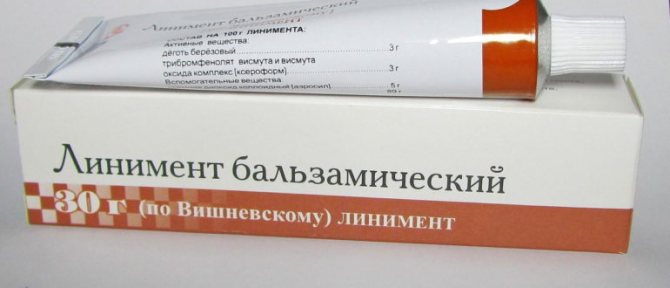
If the inflammation has festered, you can use Vishnevsky ointment at home. It is applied to gauze, which is applied to the seal for half a day. The smell of the product is unpleasant, but the effect of use is excellent. It should be treated in this way for 7 days. If there is no improvement, you need to go to the doctor.
The purpose of using Vishnevsky ointment is to accelerate the maturation of the abscess. It is better to apply the ointment at night. In the morning, the atheroma should be wiped with 2% salicylic alcohol.
You can relieve inflammation at home using a 5% alcohol solution of iodine. It is convenient to use if the cyst is small and it is located, for example, behind the ear or on the face. Take a cotton swab and dip its tip into the iodine solution. The inflamed area is lightly blotted. It is advisable to perform the procedure a couple of times a day. Iodine has a very strong effect. If atheroma has just appeared, it will disappear after a couple of days. Instead, there should be a small purple spot, then it will disappear. Hydrogen peroxide is used in the same way. It is applied directly to the atheroma.
You can make homemade compresses from ammonia diluted in half with water. They are kept on the affected area until the abscess opens. Then you should apply an antiseptic to it and apply streptocide liniment.
Other recipes
You can remove the seal at home using silver. As a rule, a cross is applied to the affected area, but coins and rings are allowed. You need to keep the metal on the atheroma for a couple of minutes, several times a day. Silver must be pure. The cyst will go away in 30 days.
Salt water can reduce inflammation at home. Take soda and salt - 1 tsp each, pour them into a glass of water. The ingredients are thoroughly mixed. The resulting liquid is moistened with the cyst several times a day.
Effective lotions
Atheroma can be cured with the help of healing therapy, which is based on medicinal lotions. However, before carrying out the first procedure, you must make sure that there is no allergic reaction to the active components, and also consult a doctor. Many patients have individual intolerance to folk remedies, which is accompanied by the appearance of a rash and itchy spots on the skin.
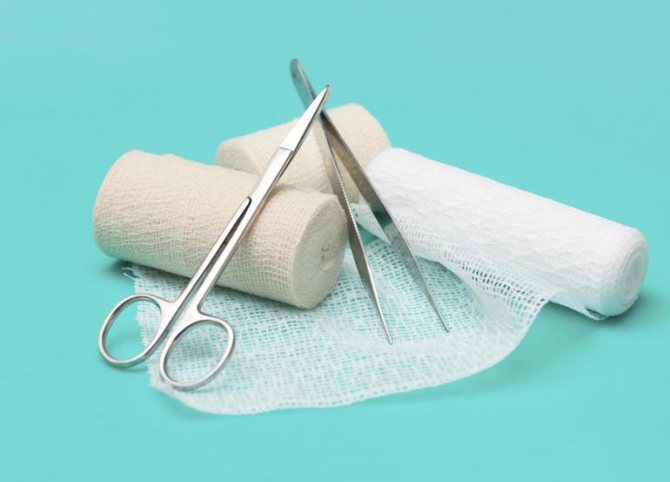
To achieve the maximum effect from self-treatment, you need to combine therapy with the use of basic pharmaceutical drugs. Lotions are applied for different periods of time - from 40 minutes to 1 hour. To speed up the effect, repeat the procedure three times a day.
Among the most effective options for lotions are the following:
- Ammonia. It is necessary to mix 2 tablespoons of alcohol with the same volume of clean water, and then apply the finished composition to gauze or bandage. After this, the lotion is applied to the affected area of the skin and kept there for 30-40 minutes. After the procedure, you need to rinse off the lotion with warm water.
- Tinctures from peony roots. If peonies grow in a summer cottage or near a private house, you need to dig up the roots of the plant and finely chop them. Then they should be mixed with two tablespoons of liquid and filled with water. After thorough boiling, the composition is filtered through cheesecloth, cooled and used to treat the desired areas of the skin.
You can treat atheroma with baked onions. To do this, you need to take 1 piece of onion and a tablespoon of grated laundry soap. The product is prepared according to the following recipe:

- The onion is baked in the oven and chopped using a blender or meat grinder.
- Then it is mixed with soap until a homogeneous consistency appears.
- The finished composition is applied to the area of atheroma formation.
- The frequency of procedures is 3 times a day until all symptoms of the disease disappear.
Surgical treatment
More radical and effective is surgical treatment, that is, complete removal of the atheroma. In case of suppuration, this method is mandatory, since otherwise various kinds of complications may arise. The operation is prescribed only after complete relief of the acute inflammatory process.
The following removal methods are used:
- Classic operation using a surgical scalpel. First, the doctor makes an incision and releases the pus. After this, the capsule with atheroma is removed. The cavity is disinfected with a special solution. When atheroma suppurates, a postoperative suture is not allowed. Healing occurs by creating primary tension, that is, applying a tight bandage.
- Laser removal. This method is used only for formations of small diameter. The atheroma capsule, along with the suppuration, is destroyed using a narrowly focused laser beam. Relapses in this case are extremely rare.
- Radiotherapy. Also used only for small tumors. The impact occurs with intense x-ray radiation of a certain direction. After this procedure, there are no scars left or they are barely noticeable.
- Electrocoagulation. Electrocoagulation removal is based on the effect of high-frequency current on the atheroma. After removal, a small burn mark remains.
- Argon plasma coagulation. This method is the latest in medicine for removing tumors. For this, a special scalpel with a directed plasma beam at the end is used. With its help, you can avoid bleeding and also not damage healthy tissue.

Classical surgery is a method of treating suppurating atheroma. All of the above methods do not require general anesthesia and can be performed under local anesthesia. The duration of the procedure most often does not exceed 20-30 minutes. After complete removal, the tissue is treated with a special antiseptic solution, drainage is installed and a sterile pressure bandage is applied. The drainage and dressing are changed daily, then every other day. Complete healing occurs in 10-14 days.
Patient reviews
There are many ways to treat atheroma. And some of them are characterized by high efficiency, and therefore deserve special attention. To choose the appropriate option for traditional therapy, you should read the reviews of patients who have experienced it themselves.
Vishnevsky ointment helped me remove a cyst in the neck area. I treated the affected part of the skin three times a day, and used wheat germ juice as a preventative measure. Just a few weeks later, all the symptoms of the disease were eliminated, and the condition of the skin at the site of inflammation noticeably improved. By the way, wheat germ can restore the normal functioning of the sebaceous glands.
Marina, Sevastopol
Until recently, she refused to have the operation, and she turned out to be right. I believe that going under the knife is the last thing, and most of the symptoms of atheroma can be eliminated at home. Personally, lotions based on potatoes, radishes and aloe helped me.
Olga, Moscow
I prefer traditional medicine and use crushed wormwood root in the form of a decoction. I was convinced that regular treatment of the affected area combats symptoms and prevents the development of complications.
Lyudmila, Crimea
Despite the many pharmaceutical drugs, treating atheroma at home is a very good alternative to official medicine. It is enough to find a suitable recipe and start preparing a decoction or lotion.
Skin atheroma
In the skin of every person there are sebaceous glands, which continuously produce a special secretion - sebum. With its help, the skin acquires elasticity, softness, and barrier qualities are improved. However, in some cases, the sebaceous gland can become blocked due to contamination or other reasons.
There is no outflow of sebum; it accumulates and stretches the walls of the sebaceous gland with the formation of a cyst. It is precisely this kind of cyst with sebum accumulated in it that is called skin atheroma. In everyday life, atheroma is often called “wen.” Sometimes you can come across the term “epidermoid cyst”, which is the same thing.
The most common localization of skin atheromas:
- Face, especially the lower part
- Scalp
- Neck, especially along the back
- Back, most often in the area between the shoulder blades
- Perineum and groin area
Of course, atheromas can form in various areas where sebaceous glands exist. Since there are especially many sebaceous glands in the above areas, atheromas form more often.
The main reasons for the formation of atheromas include:
- Closure of the sebaceous gland tubule from the outside (poor hygiene, cosmetics)
- Violation of the properties of the secretion of the gland (genetic predisposition, changes in hormonal levels)
- Inflammatory skin diseases (acne, boils, etc.)
- Hyperhidrosis, or excessive sweating (hot and stuffy climate or individual characteristics)
The size of skin atheromas can be completely different from a millimeter to several centimeters. The number of atheromas on the skin can also vary: from single cysts to multiple ones.
What diseases cause these symptoms?
First of all, if the headache is accompanied by ear congestion, the doctor will suspect a pathology of the auditory analyzer. It could be:
- otitis;
- catarrh of the Eustachian tube;
- labyrinthitis;
- atresia of the auditory canal;
- eardrum injuries.
One of the main symptoms of a purulent-inflammatory process in the hearing organs is a decrease in pain in the head when purulent discharge flows from the ear. The feeling of pressure and heaviness also disappears.
The same symptoms can occur with infectious diseases of the upper respiratory tract. Pain in the forehead and temples occurs with sinusitis. In this case, an additional sign will be impaired nasal breathing. Migraine intensifies when the head is tilted to the affected side.
If the ENT organs are in order, you should be examined by a cardiologist. Often, a sudden loss of hearing and the appearance of throbbing pain in the temples, as well as a pressing sensation in the back of the head, indicate:
- arterial hypertension;
- hypertension;
- vegetative-vascular dystonia.
In hypertension, the cochlea may be affected. Often, due to increased blood pressure and atherosclerosis, deafness suddenly occurs. The cause of this is thrombosis or embolism of the internal auditory artery.
Deviation of blood pressure from the norm can occur not only due to diseases of the cardiovascular system. Hypertension occurs with kidney pathology and diabetes.
The presence of hypertensive encephalopathy is indicated by the appearance of the following symptoms:
- nausea;
- dizziness;
- hearing loss;
- visual impairment;
- “heavy head”;
- lack of coordination;
- decreased cognitive abilities;
- constantly elevated blood pressure.
It happens that only intracranial pressure increases, while arterial pressure is normal, in rare cases it decreases. This condition occurs most often due to degenerative changes in the cervical spine and indicates:
- osteochondrosis;
- spondylosis;
- osteophytes, etc.
Osteochondrosis is the main cause of the development of discirculatory encephalopathy. With untimely and inadequate treatment, the disease leads to disability. Characteristic signs of cerebral vascular damage are:
- stuffy ears;
- pulsation of blood vessels in the temples;
- fog;
- migraine;
- feeling like my head is about to explode.
Such symptoms can occur in people of different ages - from children to the elderly. They are in no way related to age-related changes in the body (with the exception of a number of diseases caused by age-related tissue degeneration and impaired functioning of the hearing organs, as well as the human vascular system).
The feeling that something is pressing on the ears from the inside, a feeling of stuffiness in the ears, an unpleasant impression of fullness and severe discomfort are not clear symptoms of any specific disease.
Usually, when a patient comes to see a doctor, he lists a characteristic list of symptoms, which may vary from patient to patient:
- Feeling that the ears are tightly closed, as if blocked by a thick layer of cotton wool. Very often there is an impression that only one ear is blocked, while the other one functions normally. Other patients complain of congestion in both ears, but one may be more sore or “clogged.”
- Strong pressure, and patients feel as if the force is being applied from within. There is a feeling of distension, swelling of the head, an extremely unpleasant sensation that some force is pressing on the eardrums from the inside. This condition can be accompanied not only by discomfort, but also by painful sensations, nausea and headaches of varying intensity.
- There is a hum, noise, ticking and other various sounds in the head, sometimes insignificant, in some cases unbearable. This condition is very annoying and nerve-wracking for the patient, causing disruption of sleep and normal behavior.
- Headaches of varying degrees of intensity, from a slight sensation of pain in the temple or back of the head, dull diffuse pain to acute conditions when the slightest movement causes suffering.
- Dizziness, both associated with movement and appearing at rest, even with a slight change in body position.
- Nausea, constant or paroxysmal, usually not accompanied by attacks of vomiting.
- Intolerance to loud sounds.
- Hearing loss.
- Painful perception of bright light.
- Sound distortions (aberrations).
- Phantom sounds. The patient thinks that he hears the doorbell ringing, the sound of a boiling kettle, the knocking of a pot lid while boiling, the sound of a hammer, and other monotonous sounds that do not actually exist.
If the symptoms exist in a complex and have been bothering the patient for more than a day, it is necessary to urgently undergo an examination, first of all by contacting an otolaryngologist. However, the ENT doctor does not always clearly identify or characterize the disease, since such symptoms may be the result of neurological, vascular and other lesions.
READ MORE: Headache after stopping birth control
Complications of the disease
Treatment of atheroma with folk or medical remedies should begin as soon as you discover it in order to avoid its inflammation and the following complications:
- redness of the skin in this place;
- pain is felt on palpation;
- increase in cyst size;
- body temperature rises;
- the appearance of an abscess;
- frequent relapses;
- swelling of the skin;
- sepsis;
- transformation into a malignant tumor.

If complications of atheroma appear behind the ear, on the back, in the groin or other parts of the body, it is immediately recommended to contact a medical facility for treatment or surgery. Self-medication in these cases is unacceptable!
Symptoms of the disease
Atheroma can appear on the back (pictured), head, armpits, perineum, chin and between the shoulder blades; treatment should begin as soon as possible, regardless of location. These neoplasms can be single or multiple. They can be characterized by the following features:
- subcutaneous formation;
- has a rounded shape and clear boundaries;
- soft to the touch, does not itch or hurt;
- in the center of the tumor you can see a blocked duct in the form of a black dot.
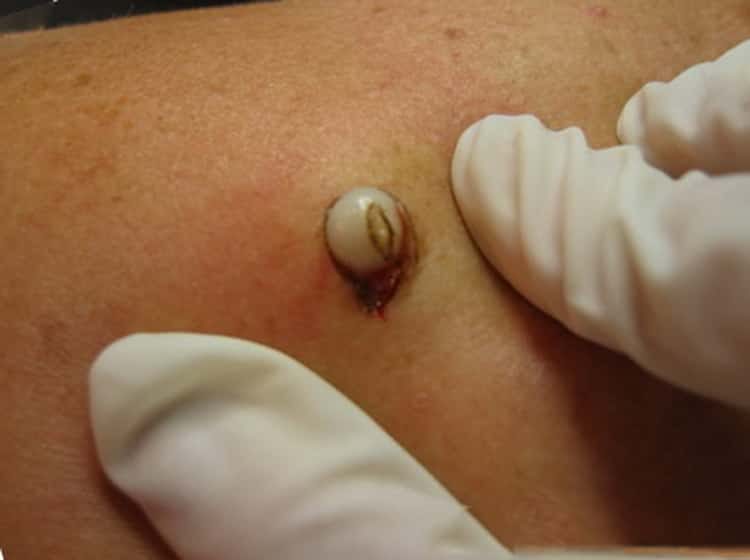
This is what atheroma looks like in its normal state. And it is very important to seek advice and prescribe treatment from a specialist, avoiding its enlargement or inflammation.
Features of traditional treatment
The only effective treatment for large atheroma is radical removal. It does not resolve spontaneously under any conditions. The contents cannot be removed without opening the capsule. You can pierce it, then all the contents will come out - like from a pimple. A visible cosmetic defect will remain, which is unpleasant - they usually appear under the hairline, less often on the back and groin. The secretion of the sebaceous gland will again accumulate in the resulting cavity. It will provoke a relapse of atheroma.
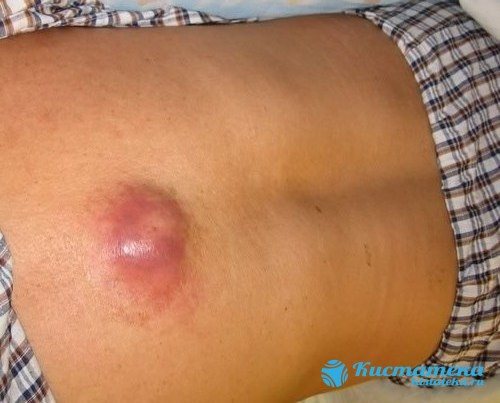
It is simply impossible to remove large atheroma at home. Unconventional treatment is useless for complete removal of the cyst. But if detected early, it is recommended to start it. It will prevent the capsule from growing, as well as possible infection.
It is important to follow a few simple rules:
- Do not use warming bandages or other methods to accelerate the maturation of atheroma.
- Do not allow moisture to enter the opened cavity of the neoplasm.
- Do not squeeze out pus.
- Do not open the burst cavity, expanding the breakthrough.
All these actions will only provoke atheroma to rapidly grow and break through. The disease will be complicated by phlegmon and abscess, which are life-threatening, and their treatment will take longer.
If atheroma is detected, treatment at home is possible if it is small. Herbal tinctures will relieve inflammation of the sebaceous gland, promote the resorption of the blockage, or provoke a quick abscess when the atheroma is painful.

